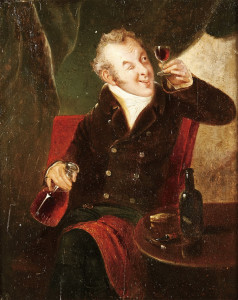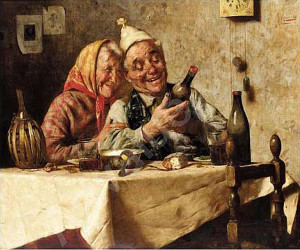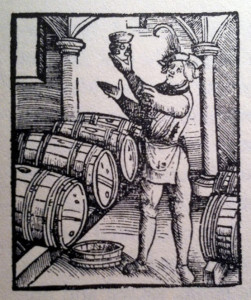SECOND DAY of CHRISTMAS
St. John’s Day
The ceremony of this day focuses on wine. The early Church assigned the date of the birth of Christ to to the Midwinter solstice in December and the birth of St. John the Baptist to the Midsummer solstice in June. Here, on this Second Day of Christmas, we have the Feast Day of St. John the Evangelist, one of the twelve disciples. St. John is the only one of the disciples who did not die a martyr’s death for his faith. He lived to a ripe old age, but not without some attempts at his life. The most famous one involved poisoned wine. But John drank the wine and it had no ill effect on him, and from this comes the tradition of honoring his day with wine.
Wine has long been brought to churches on this day for a blessing, especially in Germany and in Austria, and this blessed St. John’s wine is thought to have healing properties and to taste better than other wines. Some even hold that wine that is not blessed but is stored nearby to blessed St. John’s wine improves in flavor just by being near it.
Yesterday, for the First Day of Christmas and St. Stephen’s Day, we enjoyed roasted chestnuts and mulled wine. Today, we do the same. Simple foods and a simple act mark the day best.
Image: “Provando o Vinho” (“Tasting the Wine”) by an unknown artist working in the English School, Portugal. Oil painting, 19th century. [Public domain] via Wikimedia Commons.


